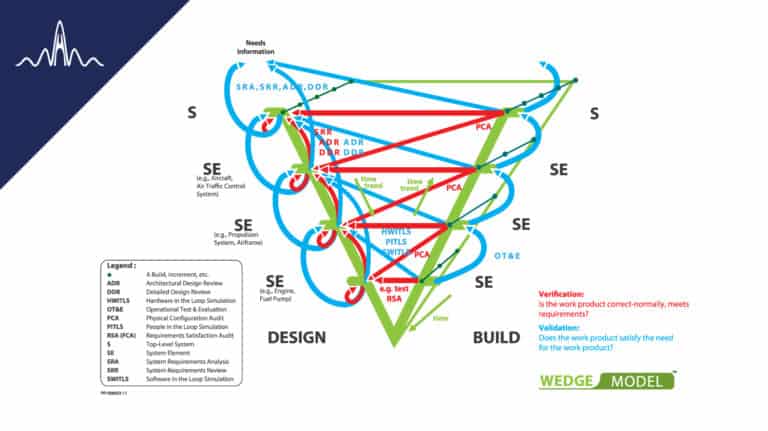In this live-recorded webinar and Q&A session, PPI Managing Director Robert Halligan demonstrates how to apply the Wedge Model™ to your engineering projects to reduce risk and increase success. The Wedge Model™, a substantial elaboration of NASA’s Vee Model of the 1960s, is a framework for the application of verification and validation within large projects to requirements, design, subsystems and system.
The Wedge Model™ shows the products of design on the left-hand side of the wedge, and the products of system integration on the right-hand side, with a second-time axis showing multiple builds, such as for Agile development, coming out of the screen. Subjects of and references for verification and validation are superimposed. Verification answers the question “is the work product correct with respect to the inputs used to create it – usually meets requirements?” Validation asks “is the work product what is needed?”. Colloquially, verification is – “have we done the job right”, and validation is – “have we done the right job?”.

What is the Basis of Justifiable Verification Costs?
90% probability of compliance vs. 10% of not Non-compliance will cost us $10mil Cost risk = 10% of $10mil = $1mil











